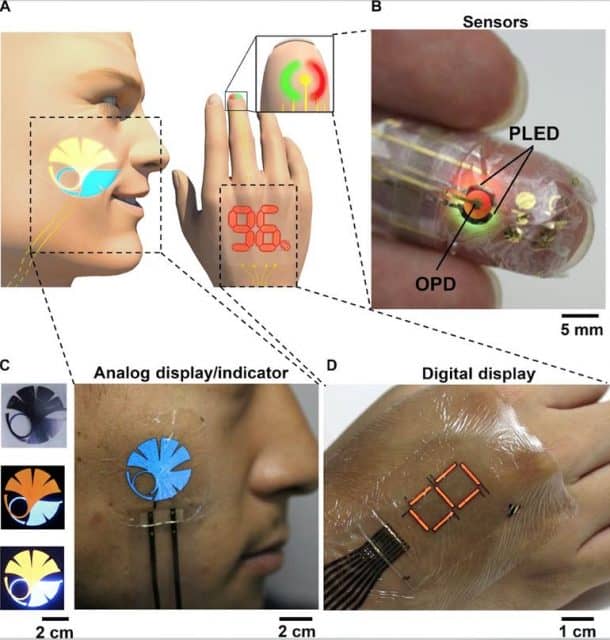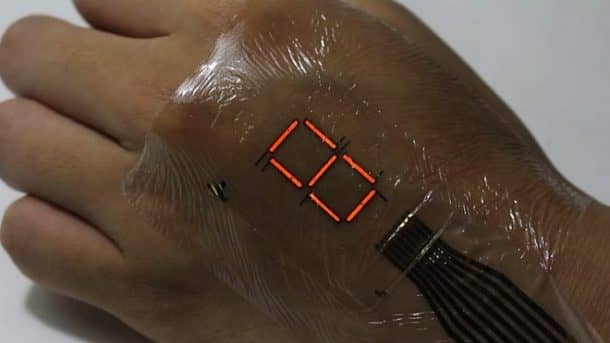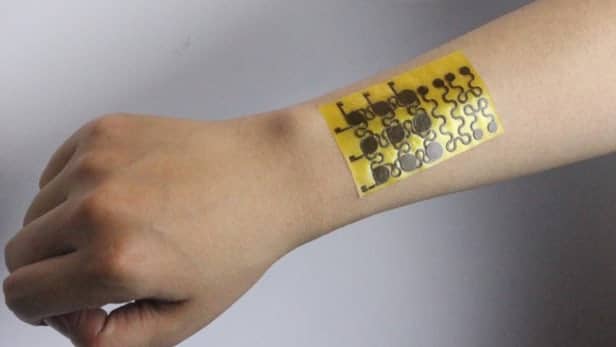Fitness trackers and health monitors in the next generation will not be little boxes that we wear around our necks or on our wrists. They might be flexible wearables or temporary tattoos. However, when these devices get damaged, they will need replacement and when they are no longer needed, they will add to the e-waste. Recently, the researchers from the University of Colorado Boulder have developed an e-skin which is embedded with a host of sensors that can be adjusted according to the customer’s need. If the e-skin gets damaged, it can be healed and it can also be completely recycled when its life ends.
The new e-skin makes use of a special polymer called a polyamine which is doped with silver nanoparticles to improve the mechanical strength, chemical stability and electrical conductivity of the e-skin. It is also embedded with pressure, temperature, humidity and air flow sensors. Heating the e-skin a little can shape it easily into the contour of a human limb or irregular surfaces like a robotic hand. The operational lifespan can be extended by repairing damage and it can also be fully recycled.

Xiao gave a press statement saying. “What is unique here is that the chemical bonding of polyimine we use allows the e-skin to be both self-healing and fully recyclable at room temperature. Given the millions of tons of electronic waste generated worldwide every year, the recyclability of our e-skin makes good economic and environmental sense.”
The e-skin and the embedded sensors can be healed with the help of terephthalaldehyde, diethylenetriamine, tris (2-aminoethyl)amine and silver nanoparticles mixed with ethanol, even if they get a cut. The e-skin can be healed using this mixture and by applying heat pressure on it. The researchers have mentioned that the sensing performance will reduce in the rehealed e-skin as compared to the new one. When the operational life of the e-skin ends, it can be soaked in the ethanol solution. This makes the polymer to degrade and the silver nanoparticles to sink at the bottom of the solution. Xiao said, “The recycled solution and nanoparticles can then be used to make new, functional e-skin.”

The team also told that the formula used in this project successfully achieved the relatively low stretchability and high strength. The fabrication method and formula modifications also played a role to make the e-skin more stretchy. Xiao said that the current device is powered by an external supply but it is also possible that a rechargeable small button batteries can be included to power the device.



iyi bir üründür.